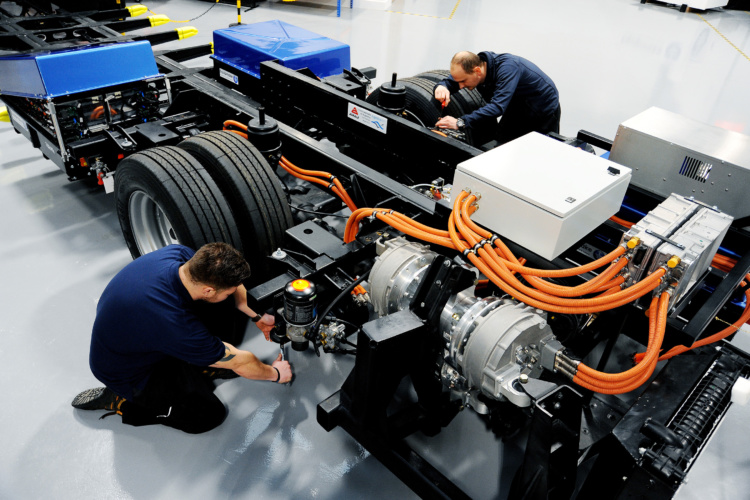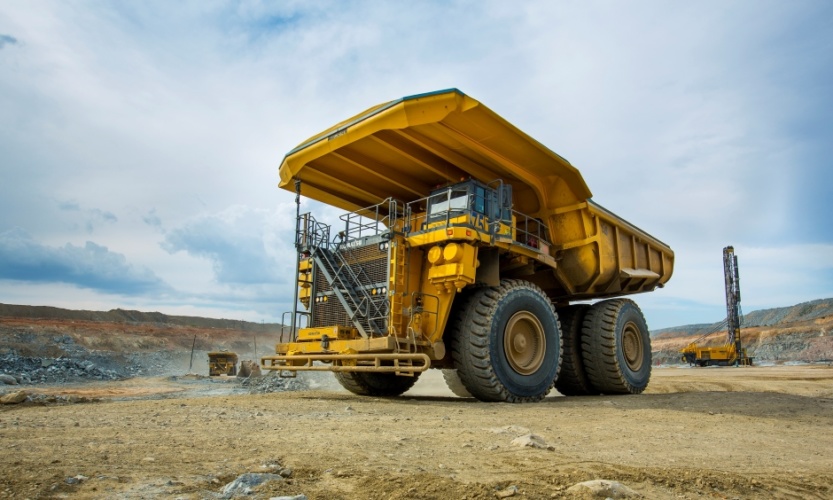Meet the experts:
Ian Foley, Managing Director, Equipmake
Paul McNamara, Technical Director, Williams Advanced Engineering
Dr. Rainer Link, Senior Vice President Engineering ePowertrain, GKN Automotive
Which form of low-carbon, private motor vehicle will dominate the next 5-to-10 years and why?
Ian Foley: Over the next five years: hybrid. OEMs have BEVs already, but the full battery technology isn’t quite there for the mass market yet at an affordable price. Couple that with the fact that most consumers are ‘innovators’ or ‘early adopters’ (i.e. small number of buyers at the very beginning of the product adoption curve) and hybrid will dominate. However, in 10 years’ time, it will be battery electric. Why? The OEM R&D budget will be there to make a BEV at an affordable price, while some second hand BEVs will be available and lessons will be learned to produce gen 2/3. There is also the imminent banning of ICE, so by this time there won’t be a lot of choice, while the buying habits of ‘Adaptors / Late Majority’ will have caught up. I could also envision the beginning of some vehicles being powered by solar as the technology advances.
Paul McNamara: There’s no doubt that BEVs are where we are ultimately travelling to. However, over the next 5-10yrs, hybrids will be the lead type of vehicle, with a progressive move to pure electric vehicles. This is due to the fact that the hybrid delivers buyers what they need in terms of range and use-ability, while the route to mass market EV uptake requires the availability of both the cars to buy and the infrastructure to support them. Furthermore, EVs need to develop further to allow a faster charging experience, to allow owners to refuel in a similar time it takes to refuel an ICE. That is something WAE is looking at as part of our relationship with Formula E: it is a real focus for the Gen3 battery programme. So, to summarise, infrastructure, fast charging, price, and availability all need to change for mass adoption.

Looking beyond private vehicles, which market sector do you see leading the uptake of low-carbon vehicles and what do you think is spurring this trend?
Ian Foley: I have to say we have a vested interest here! Not only have we developed electric motors for the car industry, but we realised pretty quickly that sectors like public transport were an ideal target, so developed an electric bus platform in 2018.
The global market for electric buses is massive - around 300,000 vehicles per annum – and that is only growing. Linked to this are rentable push E-Bikes and VTOL/Flying Taxis. Why? It is another type of affordable public transport. With the ongoing crisis, rentable bikes have become increasingly popular, with government green recovery strategies aimed at bikes, including better cycle lanes.
In addition, we are getting demand from OEMs who build vehicles for mining, construction and farming, sectors of the market where the increased payloads, lower running costs and greater efficiencies brought by EVs are hugely attractive.
Paul McNamara: The next sector to electrify will be small commercial vehicles, probably light vans. In addition, we see growth in new types of delivery vehicles which are potentially autonomous, for home and last mile delivery. This whole sector is growing through the accelerated trend of e-commerce and the current pandemic situation, coupled with the increased downward pressure on urban emissions. These vehicles are also the ideal size; it is practicable to electrify them and give them meaningful payloads and electric ranges. With larger commercial vehicles, there is a battery vs range vs payload trade-off, which will mean a slower uptake – I believe the solution for that market will involve some form of hybrid.
CLICK HERE FOR MORE SUSTAINABLE MOBILITY CONTENT
That said, there are some large commercial vehicles that make total sense with an electric powertrain, such as mining trucks, where the environment is controlled and there is real pressure on emissions and how duty cycles are managed. We are working on a project with Anglo American to develop a mining truck in what will be the world’s largest electric vehicle. Finally, urban mobility – whether through flying taxis or delivery drones – is another sector which is about to ‘take off’, if you’ll pardon the pun.
Dr. Rainer Link: We see the demand for zero-emission EV delivery vans growing at similar rates to private passenger vehicles. Why? It's clear that on-line shopping and food deliveries are growing at a rapid rate and this trend has accelerated because of the COVID-19 crisis. At the same time, cities, concerned about air quality, are developing low and zero-emissions zones whilst the delivery companies have their own sustainability policies and want to transition to electric vans. All of which adds up to a great opportunity as we see more enquiries and demand for GKN Automotive eDrive systems in these applications.

Electric vehicles are forecast to account for 1 in 5 car sales by 2026. Lithium-ion currently dominates the market, but what credible challengers are on the horizon?
Ian Foley: I could see a higher uptake of Li-ion nickel-manganese-cobalt (NMC) over Li-ion phosphate (LFP) due to power density. Also, Lithium Ion Polymer (Li‑ion polymer) has lots of potential in automotive as it has an ultra-slim geometry, suiting limited vehicle packaging and improving weight distribution.
Paul McNamara: Lithium-ion has a long life ahead of it and there are many reasons for this. Firstly, it has a lot of industrial inertia behind it. Many major companies are backing it – whether that’s through cell production or actual product use. Plus, there is a lot of development taking place which is only going to lead to further cost reductions and increased efficiencies in the near future. So, there are some big barriers to entry for any new entrant. Indeed, there would need to be significant performance gains to overcome the industrial advantage li-ion has right now. At WAE, we have developed advanced lithium-ion batteries for motorsport and for high performance EV road car projects – both of which feature the very latest battery management systems (BMS) – and we really believe the technology has a long way to go. For instance, our Adaptive Multi-Chem technology provides the best of both worlds, allowing high energy and high power density in a single pack, while we’re also working on improved fast charging with Formula E for Gen 3 batteries as I’ve already mentioned. Both technologies can bring step changes in performance.

In what ways is your organisation optimising the use of materials outside of the power source?
Ian Foley: I think there’s still a huge amount of development to be had in the powertrain when it comes to both lightweighting and clever use of materials. For instance, we’re working on a new electric motor that uses 3D printing, allowing us to only put metal where we want it to go – rather than starting from a solid billet. This motor is targeting a weight of under 10kg, yet with a peak power output of 220kW (300PS) giving it a power to weight ratio of over 22kW per kg – five times more than a conventional motor and more than double our own current technology. To put that into perspective, a conventional 300PS turbocharged petrol engine – the kind you might find in a top end hot hatchback – would weigh around 100kg.
Paul McNamara: Material choice can play a huge role in increasing the overall efficiency of the package, but so can optimisation of the vehicle’s aerodynamic and thermodynamic attributes. Integrating all of this into an electric platform was the focus of our FW-EVX project, a lightweight carbon fibre structure that incorporated aerodynamic and thermodynamic treatments – along with an advanced battery management system (BMS) – to keep the batteries operating at their optimum. In fact, the BMS can play a very wide role, increasing lifecycle, performance and enabling a second life for the batteries too. We are also working on battery system designs that make sure battery builds are practicable, maximising recycling at end of life. We’ve also developed a pair of innovative technologies that promise a step-change in the affordability of composite materials too. Known as 223 and Racetrak, these use carbon fibre reinforced polymer (CFRP), offering comparable performance to existing composites solutions, but maximising recyclability and green manufacturing processes.





Swiss geoengineering start-up targets methane removal
No mention whatsoever about the effect of increased methane levels/iron chloride in the ocean on the pH and chemical properties of the ocean - are we...